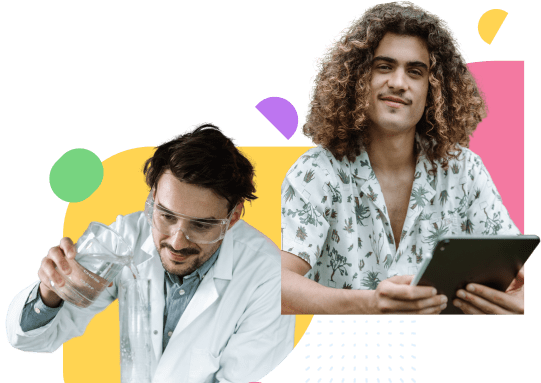Components of the Future-Ready Framework
Curriculum, Instruction, and Assessment
Curriculum, instructions, and evaluation need to be aligned and changed for students to receive a personalized technology-based, extensive learning/21st-century learning skill. Curricula and training are developed and synchronized to build authentic and real-world problem-solving through standardization and research. Learning changes to online platforms and is geared to be performance-based through evaluation.
Personalized Professional Learning
Technology enriches and enhances the learning experience through personalized professional learning. Forward-thinking is employed o carefully craft an effective instructional practice, inspire leadership competencies, and improve fluency for learner success. Technology helps expand access to opportunities for educators and enables them to achieve professional growth. The result is improved literacy and fluency, deepening knowledge, and academic success. Educators get to engage, participate, benefit, and better analyze learning for efficiency.
Budget and Resources
The future-ready framework for school improvement uses methods and materials that are based on research to modernize education and facilitate personalized, student-centred learning. Educational institutions should create an efficient structure for reviewing and creating a budget that utilizes their resources. Technology and other resources are included in the budget planning process to maximize student learning and cut costs.
Community Partnerships
Schools can achieve their learning objectives by working on collaborative projects and relationships. Partnerships between official and informal local, national, and international communities can promote learning. These partnerships are achieved through social media, digital learning, communications, and online community settings.
Data and Privacy
The future-ready framework self-assessment can safely gather, organize, and analyze data with technology. Future-ready students require data to become fluent, enhance material knowledge, and help them perform better self-evaluations. However, to inform their curricula, future-ready educators want data. Learners and educators can access data to enhance their learning and better inform instruction with a robust and responsive framework.
Robust Infrastructure
A solid infrastructure includes the effective use of technology to increase teaching and learning opportunities. Due to the infrastructure, educators and students have tools, information, resources, and practical systems. As part of the infrastructure, pupils also want kind adults who can create a supportive environment that motivates them to succeed. Therefore, a school district’s infrastructure and technology must be of the highest caliber and speed to enable advanced, all-encompassing digital learning.
Use of Space and Time
The usage of instructional time and the layout of the learning environment must change to achieve personalized learning. Competency-based learning resources that consider the learners’ needs, learning styles, paces, and interests are more effective. The instructional approaches developed by the system should accommodate learners’ pace, needs, interests, and preferences.
Collaborative Leadership
A future-ready program for school improvement necessitates the development of leaders with creative ideas. Leaders must adopt innovative strategies that prioritize equity and be open to adopting new curricula and teaching techniques as learning progresses. In addition to using cutting-edge teaching methods, resources, and technology, instructors ensure all students have equitable access to and access to these opportunities.
How to use the Future-Ready Framework
Purpose
The future-ready program aims to provide students with the agency, passion, and skills they need to be responsible, compassionate, and productive members of society when they graduate high school.
Benefits
The future-ready program offers educators, students, and other adults several advantages:
Innovative teachers build a rapport of care and trust with their students, which enhances learning engagement.
- The future-ready-framework self-assessment allows teachers to design lessons with students’ strengths, interests, and aspirations.
- Students have access to resources and tools that will help them develop essential knowledge and skills, empowering them to take charge of their education.
- Learners can relate their lessons to current issues.
- Students can learn anywhere and at any time because of the flexibility of space and time.
- The future-ready program ensures that parents and the community are engaged and in communication.
Resources
The future-ready program for school improvement leverages technology as its resource. With technology, the framework can improve teaching and learning, increase efficiency, and save on costs. Key stakeholders, including district leaders, employ strategies to evaluate resources such as technology, instructional practices, and tools for learning. The schools achieve their goals through efficient budget and resource allocations. Furthermore, consistent funding is crucial to achieving an equitable learning environment. In addition, the future-ready program achieves a return on investment for its learning program. The efficiency of the budget and costs reflects on the student’s achievements and learning goals.
Future-ready framework FAQ
What is the future-ready framework?
The future-ready program is a robust structure for learning that is student-centred and focuses on innovation and collaborative leadership.
What is a future-ready curriculum?
A future-ready curriculum aligns itself to standards, is authentic, and is based on research and real-world problem-solving.
How many future-ready gears are in the future-ready framework?
There are 8 future-ready gears in the future-ready Framework:
- Curriculum, instruction, and assessment.
- Personalized professional learning.
- Budget and resources.
- Community partnerships.
- Data and privacy.
- Robust infrastructure.
- Use of space and time.




